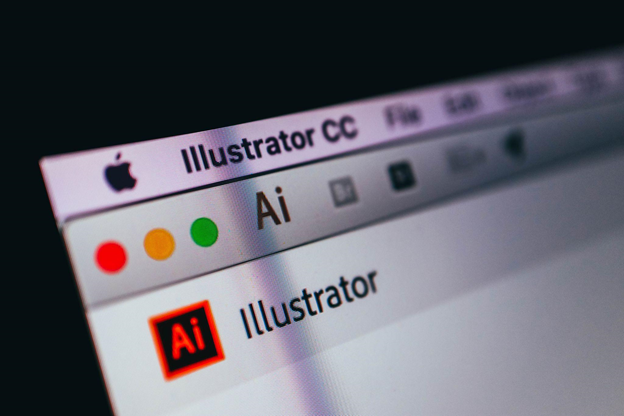Stock vector images are a great option for logos, illustrations, and other graphics that need to remain sharp and appealing across different sizes and mediums. If you are a designer, a business owner, or just someone looking for high-quality visuals, read further. This article will help you understand how to work with stock vectors from Depositphotos and choose the right vector file format to make all the difference in your projects.
What Exactly Are Images In Vector Format?
Images created in vector format are made using geometric shapes: points, lines, curves, and polygons. These shapes are defined not by pixels but by mathematical equations. As a result, they can be scaled up or down to any size without losing quality. This is how they differ from raster visuals (that often come in JPG, JPEG, and PNG formats). Rasters are made up of pixels (tiny squares of color) and are a great option for photos and complex images with subtle color gradations. However, they aren’t as scalable as vectors. Stock vectors are used by businesses and individuals for personal and professional reasons. They are affordable, instantly available, and therefore in high demand. The image stock market is expected to reach $9.3 billion by 2032.
How To Pick The Right Format For Vector Images
There are several most common formats used for vector images: SVG, AI, EPS, and PDF. Choosing the right one largely depends on your specific use case, such as where and how the image will be used.
SVG (Scalable Vector Graphics)
This file format works best for web and digital applications as it is widely supported by web browsers. SVG files are lightweight, scalable, and editable. They can be a great option for icons, logos, and illustrations on websites.
AI (Adobe Illustrator)
This stock vector graphics format can be the optimal solution for image editing and professional graphic design. AI files are fully editable and, therefore, optimal for designs in progress or master files for complex artwork. They are also convenient when you’re working on detailed designs in Adobe Illustrator, which remains the most popular vector editing software according to reviews, or sharing files with other designers using this tool.
EPS (Encapsulated PostScript)
This is one of the most optimal solutions for printing and professional publishing. EPS is the industry standard for printing, and it is supported by most vector and desktop publishing software. You can use it when working with legacy software or sending vector visuals to printers.
PDF (Portable Document Format)
This file format is one of the best for sharing and modern printing.

It can be opened on most devices and supports vector elements while allowing the embedding of fonts and images. What’s more, the format is secure and preserves formatting.
How To Work With Stock Vector Images Efficiently
If you haven’t worked with images in vector format before, it might be challenging to figure out where to start. Here’s a step-by-step guide to help you out.
Choose The Right Stock Vector
You already know how to pick the right file format. Now, you need to figure out where to look for stock vector photos and illustrations. Some of the most common and straightforward options are stock platforms like Depositphotos, Pixabay, Pexels, and others. They offer both free and paid vector visuals.
Next, you need to understand the license the chosen vector comes with. They might differ across platforms, but most offer the following:
● Free/personal use. This license allows limited image use without any commercial applications;
● Commercial use. This license grants use in commercial projects, either for free or for a fee (depending on a visual);
● Exclusive rights. This type of license is the most expensive, but it also grants exclusive and unlimited use of a purchased vector.
Download Your Chosen Vector File
First, select the necessary resolution or size. Although the vector format is scalable, some stock platforms often offer optimized sizes for specific uses.

Then, save the file to your computer, preferably in a special folder. This will allow you to easily access your visuals when necessary.
Edit The Visual If Necessary
This is usually done using specific editing software, such as Adobe Illustrator, CorelDRAW, or Affinity Designer. You can customize the downloaded vector by changing its colors, editing shapes, replacing fonts (if the file has text layers), adding or removing certain elements, and resizing it.
Save and Export
Once you have finished editing, save your file. Don’t forget to keep a working version in its native format (like AI or SVG) for future edits. Then, export your project in the appropriate format, depending on your intended purpose of use. If attribution is necessary, you’ll have to credit the creator. Therefore, check the licensing terms and include credit if necessary, either in the project or alongside its publication.
To Sum Up
Stock vector images can be a useful, practical, and affordable solution for anyone working in design, whether for personal or professional purposes. Their ability to scale without compromising quality allows you to use them in many formats, from web graphics to professional printing. Choosing the right vector format and editing software allows you to ensure that your designs are both high-quality and versatile.


More Stories
How B2B Brands Can Use Technology to Improve Customer Relationships
GR8 Tech Casino Software Solution Expert — Learn How the Turnkey Solutions Work
Develop Your Career with Courses in Cloud Computing and Cybersecurity: A Complete Guide